Rattan chairs: varieties and tips for choosing
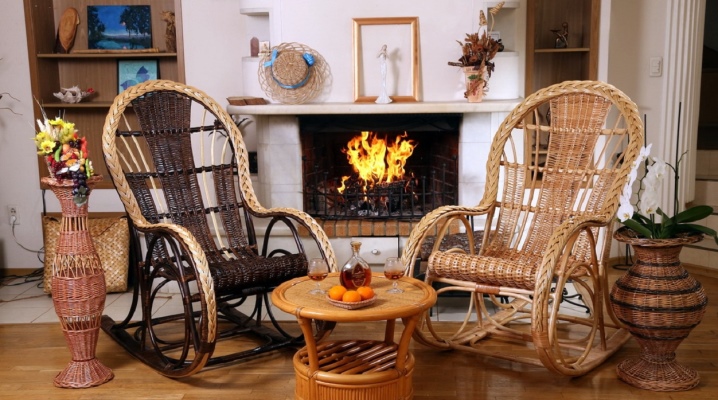
Rattan are the stems of the calamus plant. Its other name is rattan palm. It grows in tropical regions of Asia. Long stems are used for the production of wickerwork or decoration of individual interior elements. They are used to make pieces of furniture and decorations. In modern production, an artificial imitation analogue is used.

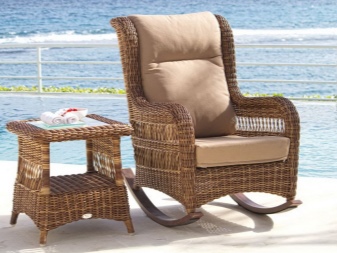
Advantages and disadvantages
To the pluses of this material can be attributed:
- environmental friendliness;
- versatility;
- aesthetics;
- practicality.
The importance of the environmental properties of the materials from which these or those interior items are made has long been noted by experts. Rattan is one such material. It is non-toxic, does not emit harmful substances, unlike plastic equivalents. With tactile contact, it does not cause allergic reactions. Only paints and varnishes applied to it can be allergenic.
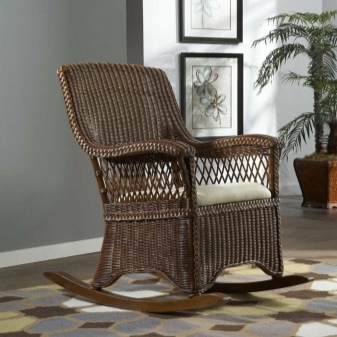
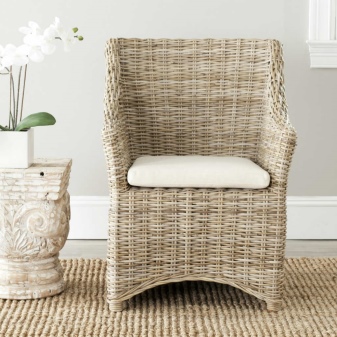
Rattan products fit organically into rooms decorated in different stylistic directions. It will look equally good against the background of the Scandinavian style, Hi-Tech design. The properties of the material make it possible to expand the list of variations in forms and modifications, which allows you to effectively combine pieces of furniture with interior design and expands the scope of application of a creative approach to design.
Products woven from rattan look expensive and prestigious. Furniture items such as armchairs are often used in living rooms, hallways and reception rooms. They are designed not only to fulfill their target function, but also to improve the visual perception of the room.

Rattan chairs are practical. They are less susceptible to abrasion, pollution and more resistant to destructive loads. Since the structure of the rattan is elastic and the weaving creates cushioning, the products can be subjected to loads that exceed the average load on furniture manufactured using conventional technology.
The most common items made from rattan are chairs.
In terms of their visual characteristics and technical parameters, they can differ significantly from each other, which determines their intended purpose.
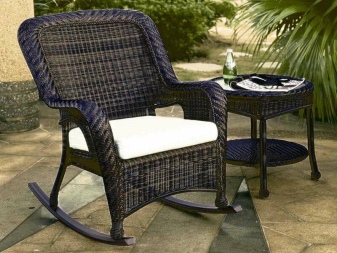

Types of material
The main difference between modern wicker chairs is the composition of the material from which they are made. The variety of materials is divided into two groups: natural and artificial.
Natural
Natural rattan is the stem of a palm tree that can grow up to several meters in length. By its composition, the material is close to the structure of wood. At the same time, it has an extremely high threshold of flexibility, which makes it possible to manufacture chairs from it with elements that have an irregular shape.
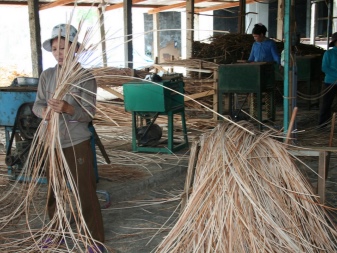
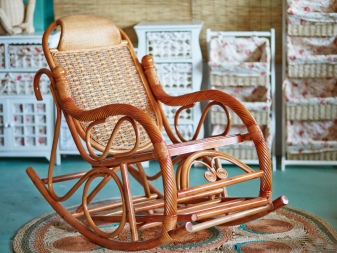
To use the stems in the manufacture of chairs, they are harvested at certain times of the year and subjected to preparatory measures to bring them to suitability. In rattan preparation technology, hot steam is the main production process. The stems are placed in a tall cylindrical container, which is supplied with hot steam under pressure. The molecular structure of the preforms softens, acquiring elastic properties, after which it becomes suitable for use.Under manual processing, the stems are not steamed, but boiled in hot water using the same cylindrical container.
In the manufacture of chairs, stems can be used with or without bark. The presence or absence of bark endows the product with individual external characteristics.
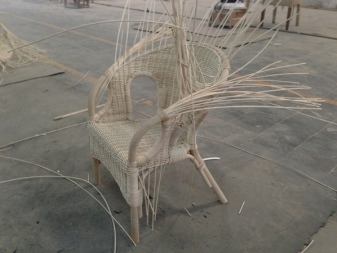
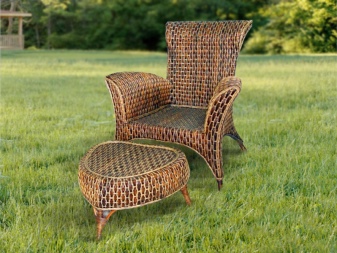
Artificial
Modern models of wicker chairs are made of artificial material, as this reduces the cost of the procurement and production process, which also reduces the market value of the products. Thanks to this, a larger number of consumers can afford to purchase this type of product.
To keep the properties of natural and artificial rattan close, manufacturers use a combination of natural and synthetic components. For this, cellulose and nylon are used. The output is a raw material that is close in characteristics to the original.
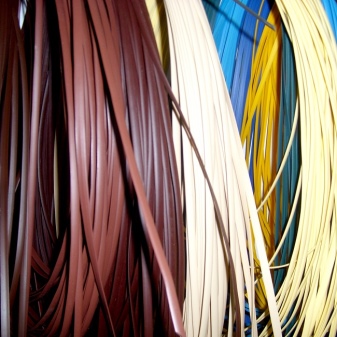
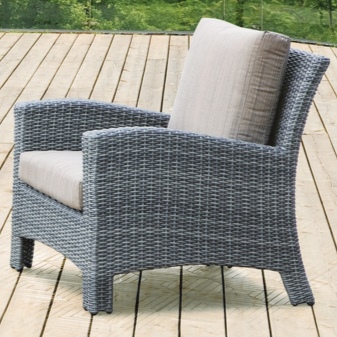
Manufactured rattan is virtually indistinguishable from wild-grown rattan. Differences can be noticeable only in appearance and in resistance to the influence of aggressive environments.
Artificial material can be washed, cleaned, treated with household chemicals and other means, the action of which could negatively affect the same product made from rattan of natural origin.
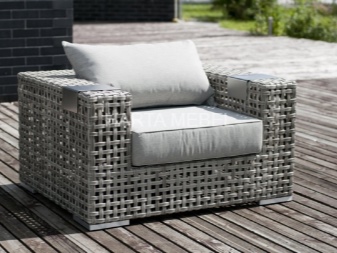
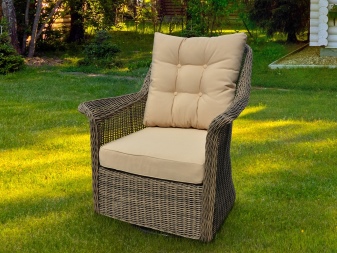
Weaving types
Chairs woven from rattan can differ not only in the characteristics of the material used, but also in the way of weaving. The main types of weaving chairs:
- openwork;
- solid;
- combined.
Openwork weaving involves the use of rods binding technologies in various geometric sequences and combinations. For example, the pattern can be diamond-shaped, spiral, circular. Openwork weaving in a rosette way is popular, when the pattern spreads from the center to the edges.



Solid weave is a layer-by-layer overlay of twigs across each other with step-by-step interleaving. Eventually the structure of the product can be made in straight, round, diagonal or zigzag variations.
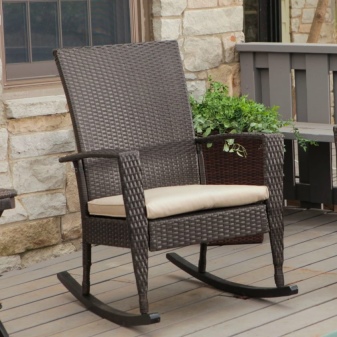

The combination of weaving methods gives the product an original look and special stylistic characteristics. When choosing this technology, all the individual elements of the chair are made in their own complete version. The use of two technologies when weaving one element is not advisable and beneficial from a design point of view.
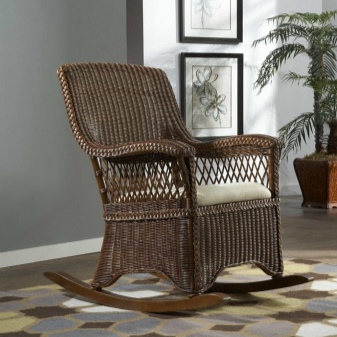
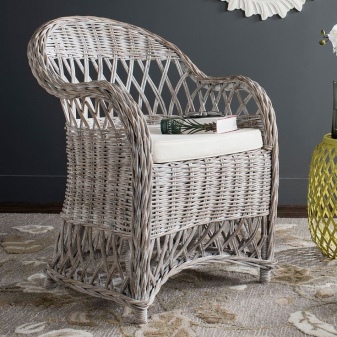
Models
Among all the model variety of rattan chairs, the main directions can be noted.
Classic
These are chairs that have a standard design style and a list of constituent elements: one or more legs, armrests, backrest, headrest. In a particular design of the chair, certain elements of a standard purpose may or may not be present. Such a product can be equally used as a garden one, and as an item in the kitchen interior of an apartment. Due to the presence or absence of a specialized support mechanism, the chair can be stationary or rotating.
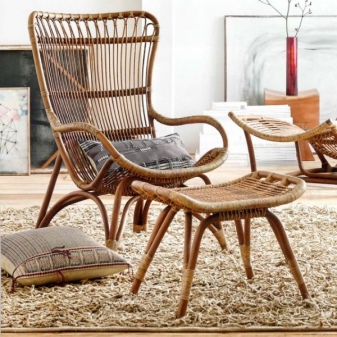
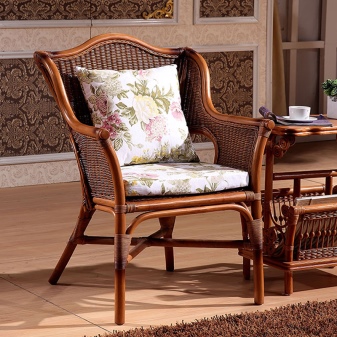
Rocking chairs
Such chairs are similar in design to classic modifications. Their main difference is the presence of semicircular or other runners. The mechanical swing means can be independent of the weaving method.

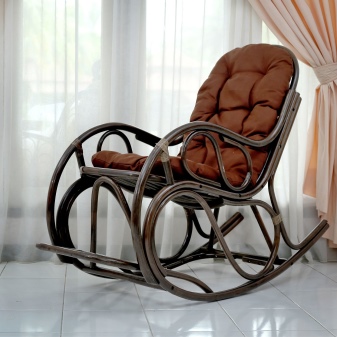
Suspended
The hanging chair has a characteristic rigid frame to which a means of restraint - a rope or chain - is attached. Such a chair can also be suspended on a spring, which creates a special feeling during use. A distinctive feature of such products is the absence of support legs. Depending on the method of suspension, it can be rotating or facing only one chosen side. In shape, they often resemble a half egg or a bird's nest, which also gives the interior a special character.
A garden swing can be made according to a similar principle.
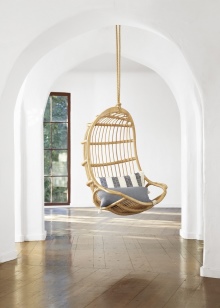
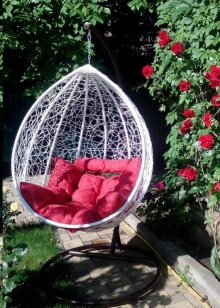

Dimensions (edit)
The dimensional parameters of wicker chairs differ depending on the models and can vary significantly both in terms of width and in other indicators. Generally accepted standards are always maintained (this refers to the height of the seat above the floor level, the height of the armrests, the minimum width of the landing opening).
These dimensions are derived empirically and standardized. Deviation from them, even dictated by design decisions, can lead to inconvenience in the operation of the product. To avoid such problems, manufacturers strive to optimize the combination of stylistic characteristics with parameters of practicality.

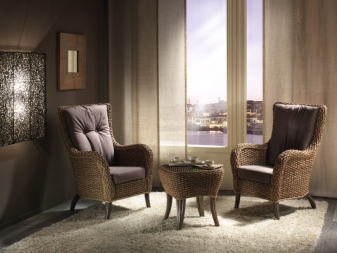
Design
The style and design of the wicker chair is largely determined by the similar characteristics of the entire room. Depending on the direction of the chosen design, the color, shape and model of the product may differ.
If it is suspended, then in most cases it is equipped with a suitable pillow, as this makes operation more comfortable. In cases where when it is installed on a veranda or in a certain area of a summer cottage, softening bedding is most often not used... This is due to the fact that the open space of the street affects the chair in the form of humidity, sunlight and other factors, and the pillow is most susceptible to such influences.
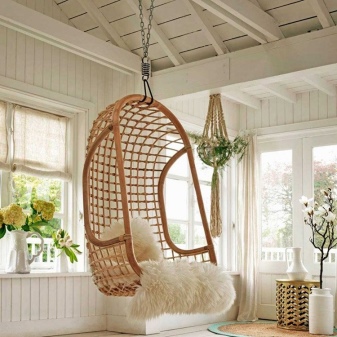
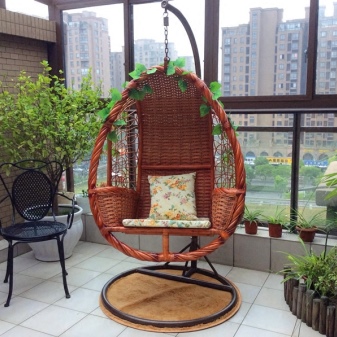
The wicker chair can be made with an initially upholstered seat. Such modifications do not imply the ability to service the litter when removing or replacing it. In such cases, it is advisable to use special covering mats, which serve to keep the soft seat in good condition.
Color plays an important role when choosing a chair. The shade should match the overall color scheme of the room. For example, if a room is dominated by white, then the chair that fits in the best will be white.
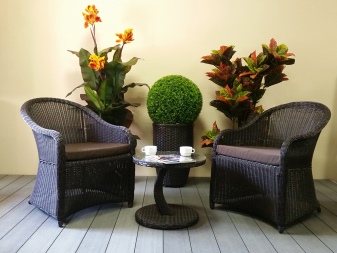
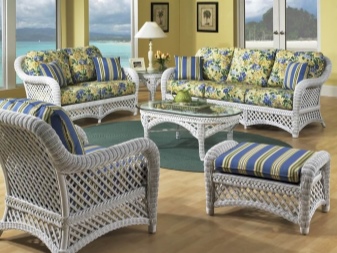
Manufacturers
Firms that produce wicker chairs and sell them under the brand name IKEA brand, offer a wide selection of these products, which differ in model characteristics, the presence or absence of mechanisms for transformation and other parameters.
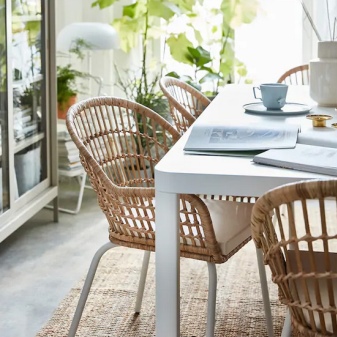
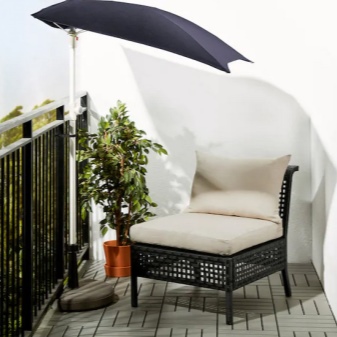
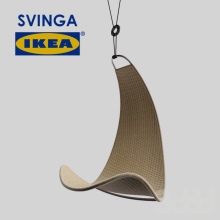
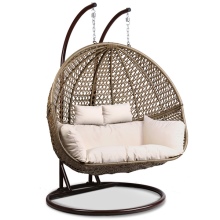
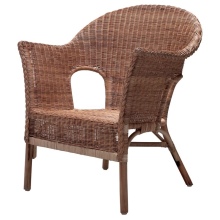
Care and maintenance
The care of a wicker chair depends on the material from which it is made and its intended purpose. If rattan is natural, it is necessary to minimize its contact with moisture, open fire and other undesirable factors of influence.
Such products, if the characteristics allow, can be periodically treated with protective agents, which include varnish, paint, stain and other types of impregnation.
A chair made of artificial materials also needs proper handling and maintenance. It must not be used at loads exceeding the manufacturer's prescribed level, and must not be kept near fire or in the open sun.
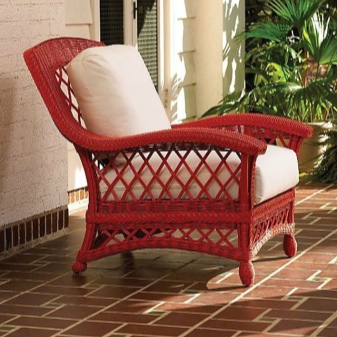

Selection Tips
The choice of such an interior item should be based on the user's preferences, depend on the stylistic characteristics of the interior and the intended purpose: use at home, in the country or in an apartment.
Also, when choosing, you must take into account the following list of parameters:
- the chair should not be too heavy;
- it must be strong and safe for both adults and children;
- the material of its manufacture must be designed for long-term use;
- external characteristics should fit well into the design of the room;
- the model should be comfortable.


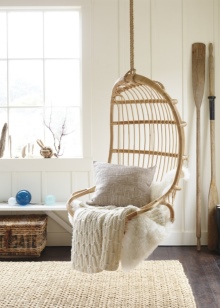
See the following video for the secrets of making rattan furniture.













The comment was sent successfully.